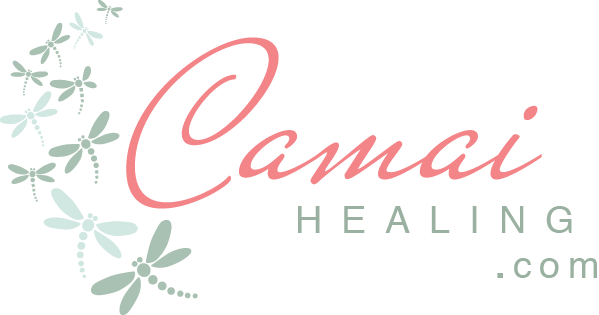Getting Ready For Spring!
It is very important to prepare our
respiratory system for the changing weather that spring will bring. Winter
allowed us to store reserves rich in toxins and to decrease our physical
stamina, thus respiratory activity slows explaining the pre-spring fatigue many
of us feel.
To get things going again we need to begin by regulating the energy of our lungs and our skin; we have to learn again to inhale. While waiting for the arrival of good fruits and vegetables, let's begin by reducing our consumption of sugars and animal fats. Let's drink more herb teas and less coffee.
It is our respiratory system which will give back the shine to our skin.
To get things going again we need to begin by regulating the energy of our lungs and our skin; we have to learn again to inhale. While waiting for the arrival of good fruits and vegetables, let's begin by reducing our consumption of sugars and animal fats. Let's drink more herb teas and less coffee.
It is our respiratory system which will give back the shine to our skin.
In Facial reflexology we focus on
reflexes for all the organs and all parts of the body. We stimulate the whole
of you through specific touch on the face. You can also work these areas
on your own face.
Try
This Daily
Begin by stimulating your
cheeks with gentle finger tip sweeps. the cheeks are the reflex areas for your
lungs. Two minutes on each cheek will help to restore clarity and hydration to
your lungs. Next you can slowly stimulate the liver reflex, the liver reflex
zone is on the right side of the nose. After this lets do the stomach reflex,
this zone is opposite the liver reflex on the left side of the nose. one minute
each side is good.
You can also do this wonderful Dien Chan multiflex massage
Along with stimulating your organs
on your face you can also make some lovely facial scrubs and creams.
Exfoliating your face will help to
slough away dry skin, leaving your face much softer and smoother. These recipes
take about five minutes to make, and the scrub can be used once a week.
Honey
Facial Scrub
½ tablespoon raw honey
1 drop lavender essential oil
1 drop of frankincense essential oil
1 drop geranium essential
oil
Directions:
Combine the baking soda and honey
together until it looks like a paste. Add one drop each of lavender,
geranium and frankincense essential oils.
Place a warm washcloth over your
face and hold on skin for a minute or so to open up your pores.
Gently rub face with facial scrub
using small circular motions (be gentle with your skin!). Keep massaging
skin with scrub for 3-5 minutes to fully remove dead skin from face and to let
the essential oils work their magic.
Rinse off with warm water.
Please note that when
buying essential oils you want to be sure to buy pure oils. The word
therapeutic means very little, as any company can tag this word onto their
essential oil product. The price is often a good indicator on pureness but not
always.
Oatmeal Honey face Scrub
2 tablespoons ground oatmeal
1/4 teaspoon sea salt
1 teaspoon water
1/2 teaspoon olive oil
1/2 teaspoon honey
Combine all of these ingredients and
stir thoroughly until they form a paste. If you find that it’s too thick, add a
bit more water until it’s a consistency that you like. Slather it on your face
and use your fingertips to rub it around gently in circular motions. Rinse with
warm (not hot) water, and pat dry.
It is also nice to add
a moisturizer to your skin after an exfoliating treatment. One of my favorite
sites to visit for recipes is The Nerdy Farm Wife - she
is amazingly talented.
Here is a really simple recipe that is wonderful to get you
started.
Beginners Lotion Recipe
1 1/4 cup hot water
1/4 cup emulsifying wax
1/4 cup olive oil ( organic)
1/4 cup emulsifying wax
1/4 cup olive oil ( organic)
10 drops lavender essential oil (
make sure it is good stuff)
Using a double boiler melt the emulsifier wax slowly and when almost melted add the olive oil.
Take off the heat and add the hot
water to the oil mixture and mix well. let it cool slightly, stirring now and
then and then add the lavender essential oil.
Pour the hot lotion into wide mouth
pint size jars and let cool overnight. The next morning you’ll have a fresh jar
of homemade natural hand lotion!
You can use a wide variety of
different liquid oils in place of the olive oil and you can use any essential
oils you like. This is a thin no greasy moisturizer lotion that your whole
family will enjoy.
DISCLOSURE: Please note these statements have not
been evaluated by the Food and Drug Administration. This is for informational
purposes only and is not intended to diagnose, treat, cure or prevent disease.
I am not a doctor. I am simply sharing my experiences.
There is nothing quite as wonderful as treating yourself to one of my facial treatments , not only incredibly relaxing but also deeply healing.
- Facial Reflexology
- Japanese FaceLift
- Indian Head massage
- Facial Lymph Drainage
- CranioSacral







